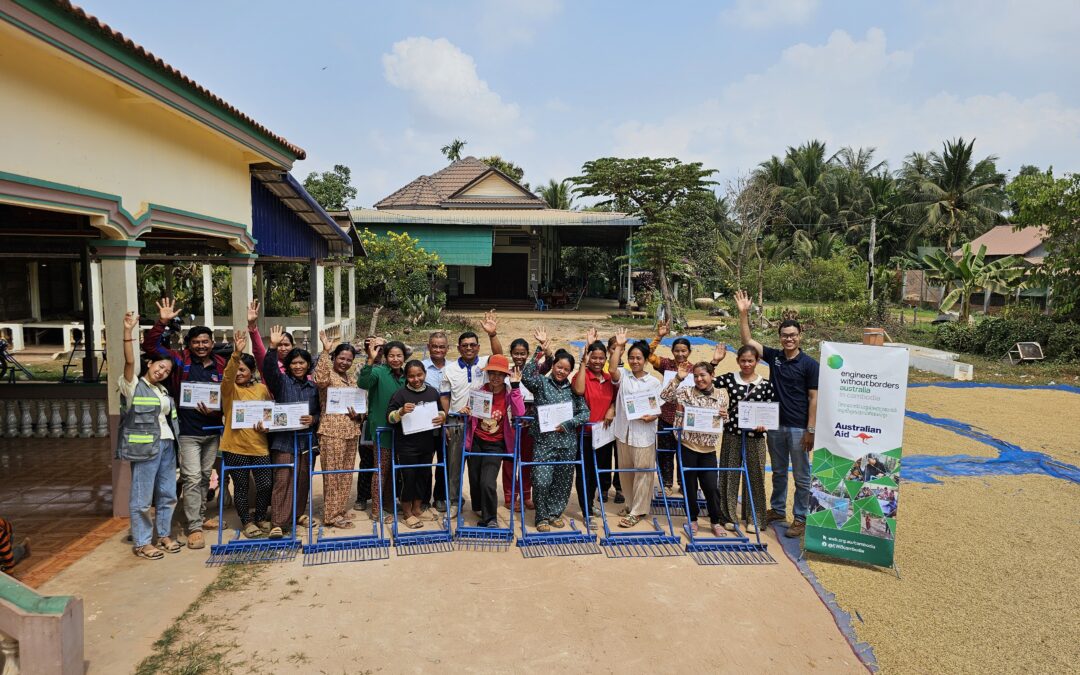In Cambodia, nearly 80% of people live rurally and many operate small farms to feed their families and generate income. These agricultural holdings are often run, and worked, by women who face unique challenges in the field. EWB engineers Mengheang Hak, Mitch Horrocks and Chanrika Keo are working with Cambodian women farmers to change that through AgriTools, a new project by EWB.
When AgriTools was launched in the Siem Reap province in 2023, the team had a specific mission: to design agricultural tools, in collaboration with the women who use them, to suit their needs, make their work easier and increase their independence. The project is supported by partner Banteay Srei, a Cambodian NGO dedicated to empowering vulnerable women and creating positive, lasting change in the lives of the people they serve.
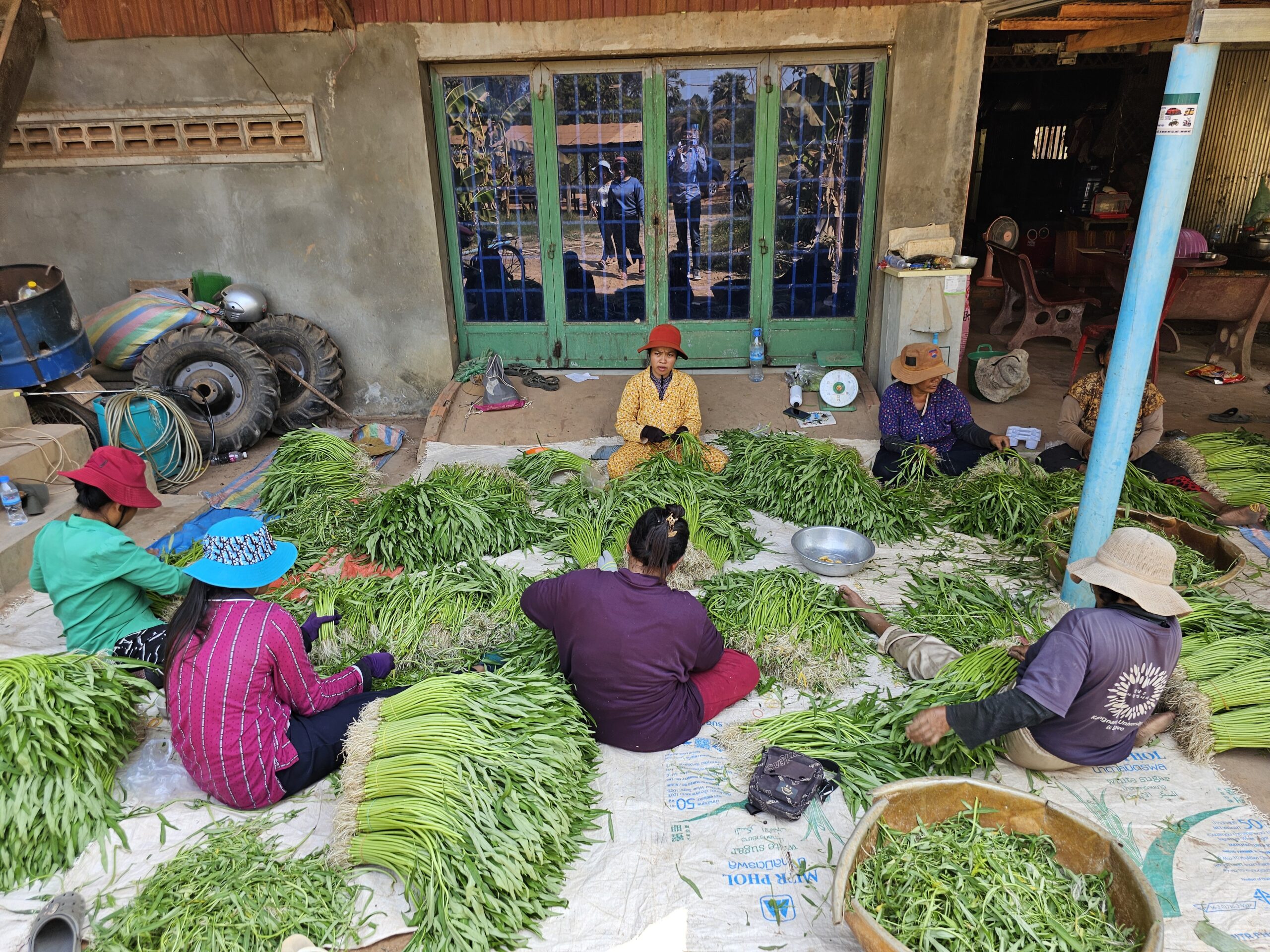
Consultation process
With support from community partner Banteay Srei, the team commenced the community consultation process by running workshops with female farmers focussed on gender awareness. Workshop activities prompted the farmers to reflect on gender roles, gender equality & equity and social norms related to gender. The workshops also helped them question outdated ideas about which jobs are ‘for men’ and which jobs are ‘for women’. “A key objective of our gender awareness efforts is emphasising the importance of providing women in agriculture with equal access to resources and opportunities. This can help women better advocate for their needs within their families and the community” explained Chanrika.
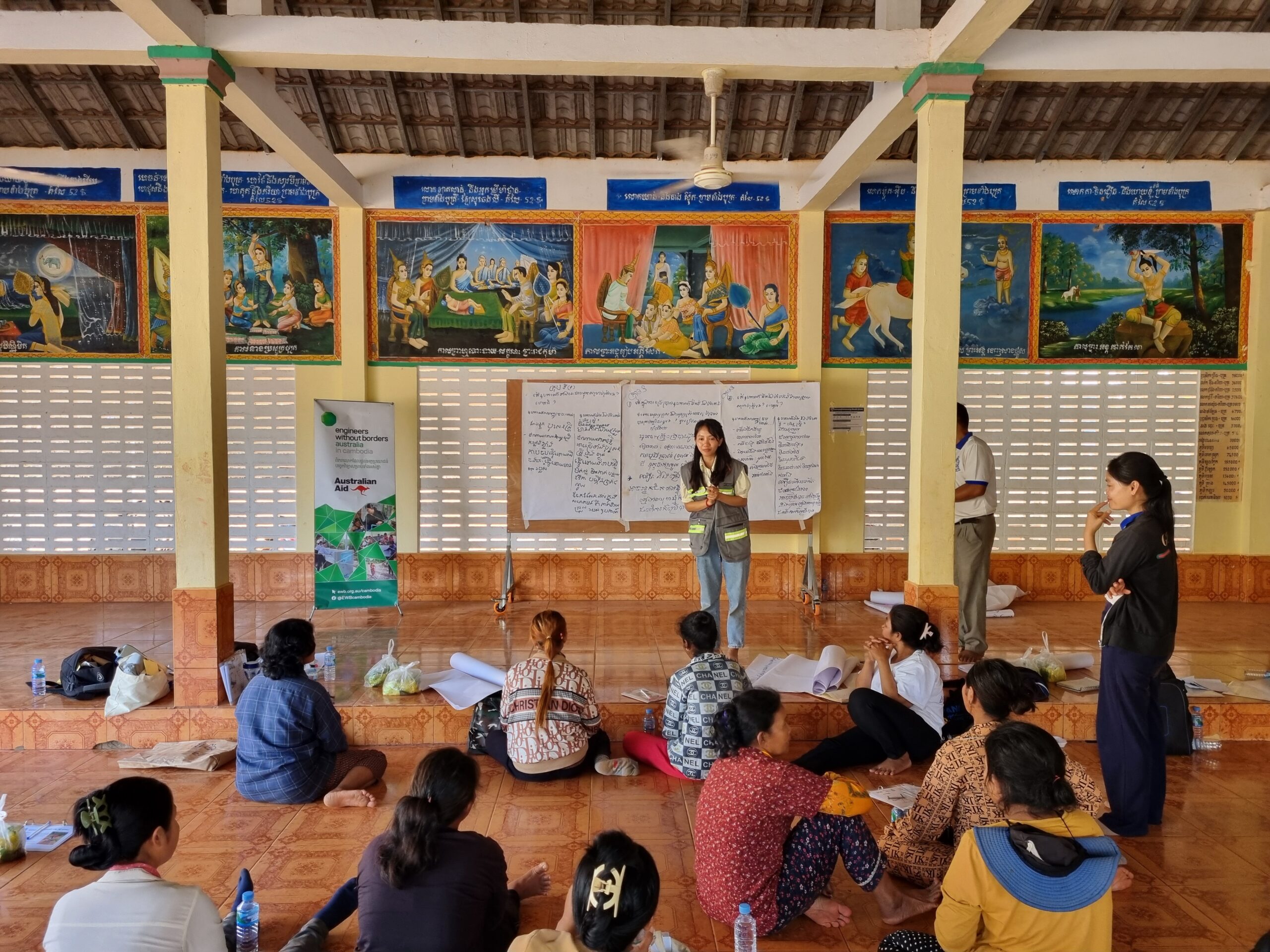 Following the gender awareness workshops, Mengheang and the team held participatory design workshops with the community to identify the challenges faced by women farmers in rural Cambodia. These include:
Following the gender awareness workshops, Mengheang and the team held participatory design workshops with the community to identify the challenges faced by women farmers in rural Cambodia. These include:
- Taking care of crops
-
-
- Dealing with seasonality, changing weather patterns, pests, general maintenance of crops
-
- Transportation
-
-
- Transportation of fertiliser, water, soil, harvest, and animals around the farm
-
- Making compost
-
-
- Technical requirements needed to create compost that benefits the soil
-
- Buying seeds
-
-
- Can be expensive and unreliable
-
- Processing after harvest
-
-
- Preparing the soil again for planting season
-
- Soil preparation
-
- Digging dry, hard soil in preparation for new seasonal crops
Mengheang and the team used a scoring system to assign priority to problems. They discovered soil preparation and transportation were two of the biggest problems experienced by the community. For female farmers preparing the soil using traditional hoes and rakes, the team discovered that many of the farmers could not dig and break the soil without causing pain to their arms, shoulders, back and legs. “Most small-scale farming tools require strength to operate them, which often makes it difficult or even unsafe for women to use these tools.” said Chanrika.
The problem of transportation is another big one to tackle because it’s inextricably linked to structural inequality. Many of the women don’t own or have access to any mechanical mode of transport and carry everything they need to farm by hand – including huge volumes of fertilisers and crops. Cars aren’t common — they account for just over 10% of the vehicles registered in Cambodia. And while some women had motorbikes which could be retrofitted to attach carts, this was often a dangerous exercise.
The issue of transport is still high on the list for AgriTools, but for now, the team turned their attention to creating a tool that could facilitate independent, safer and faster soil preparation for women farmers.
Prototyping
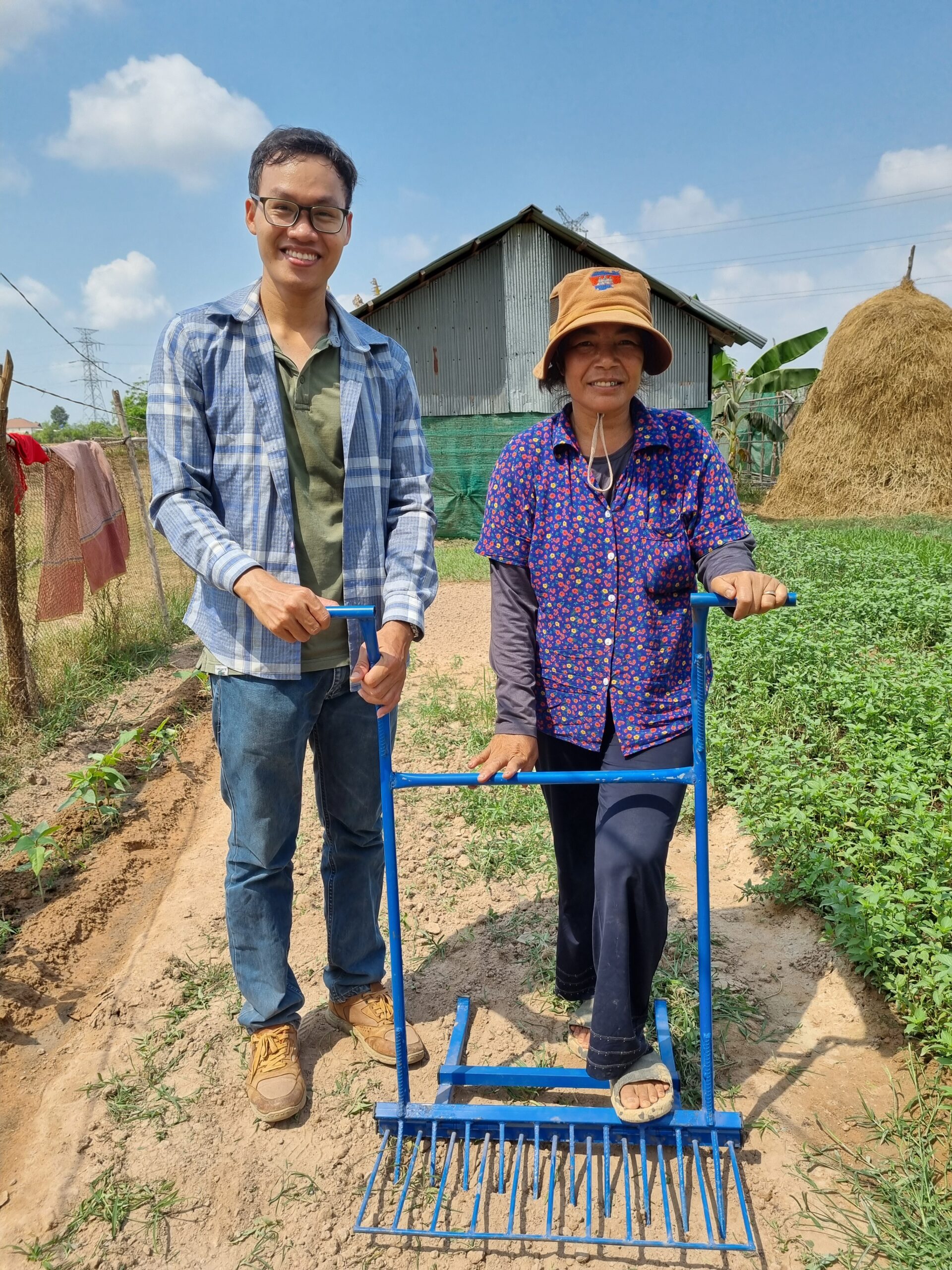
EWB Engineering Technology Officer, Mengheang, and female farmer Sorn Maleab with the Handi-Plough tool.
The EWB team had experience designing bespoke, community-driven technology for agricultural purposes thanks to AgriLab, a previous project aimed at designing tools for farmers living with a disability, delivered in partnership with Light for the World.
During this project, the team had developed two soil preparation tools that served as the foundation of a new design for AgriTools. One tool was used to break soil and one used to mix soil. While many of the farmers had access to some form of soil mixing and breaking equipment, the tools were often cumbersome and difficult to use as they were designed to fit the size and frame of male farmers. “Whether it’s suitable or easy for them or not, they have to use it because it’s the only choice for them,” Mengheang explained.
The team combined the two tools into one design and built a prototype which they tested with women in the EWB office as a starting point. “The first model created was from PVC piping,” Mitch said. “We created the ideal size we thought necessary out of PVC and then the team would push and pull it and hold it and see if that size was accurate.”
Iterating
Drawing upon EWB’s Technology Development Approach, the team developed a prototype from this initial phase of testing and took it out for the farmers to try. “We use a human-centred design participatory model, so research and development as well as testing,” Mitch said. “We tested the size, made sure that when they pull it, how does the handle sit in their hands? Does it need to be wider so that they can pull past the width of their body? How far do they need to pull down? The angle of the teeth was adjusted as well.”
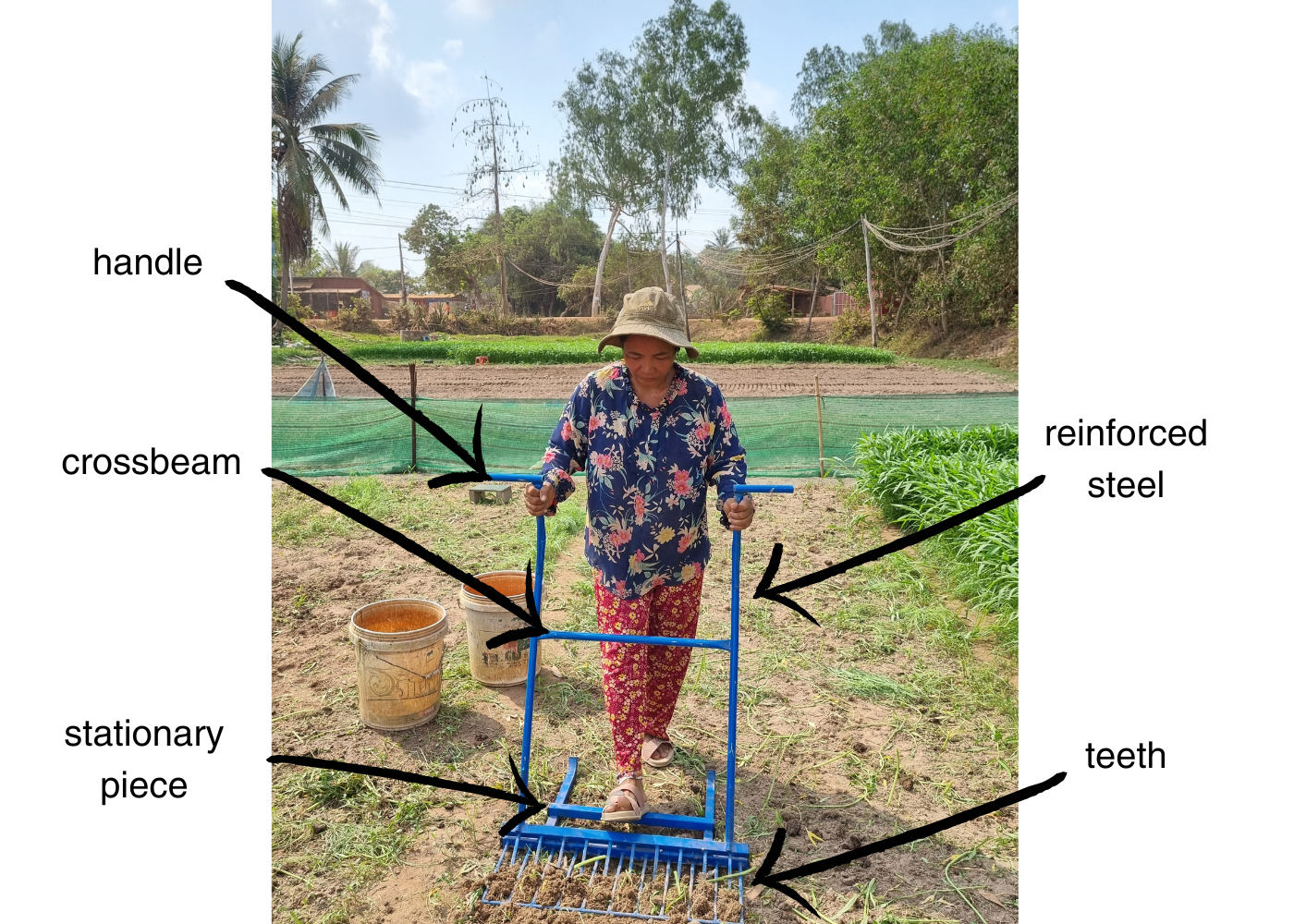
In the second iteration, the team amended the tool so it would stand up to the difficult work of farming. When combining the digging and breaking tools, they were connected without a bearing but this made early iterations difficult to use as the bolt and nut connection became looser with each rotation. The team added a hinge to get around this. They raised the cross-beam because it was hitting people in the leg while they used the tool. They widened the tool at the request of the farmers, tried different designs for the handle, and experimented with adding steel in various configurations to strengthen the design where it became stressed while balancing the weight and usability of the tool.
Mengheang and the team went through three rounds of testing and redesigning with the farming community in Siem Reap until it was deemed ready to test in the field. After some brainstorming sessions, the team finally settled on a name for their creation: the Handi-Plough Tool. The tool was then ready and sent out to be used, and assessed, by 17 female farmers over three months.
Next steps
Monitoring and evaluation is embedded in this project and in all of EWB’s work. Later this month, the team will travel to Siem Reap province and gather data from the three month trial. During this trip, the team will speak to women farmers to assess the successfulness of the tool and see firsthand how the project is impacting their lives. Among the women who benefit from the tools is Sumarean, a farmer living with a disability that affects her mobility on the left side of her body. Sumarean was previously unable to dig and break the soil herself and required her husband to help her. With the Handi-Plough tool, Sumarean is now farming independently for the first time. Speaking to farmers such as Sumarean will help the team understand if there are any design modifications that need to be made to ensure safe and easy use of the tool.
“We’re hoping that once this pilot is underway we can work with the community to scope out new opportunities, [but] these will always come from the community first,” Mitch said. “For [the Handi-Plough] tool, we hope to prove the effectiveness and benefit of it and then go to the market and scale it up so it can reach as many people as possible”.
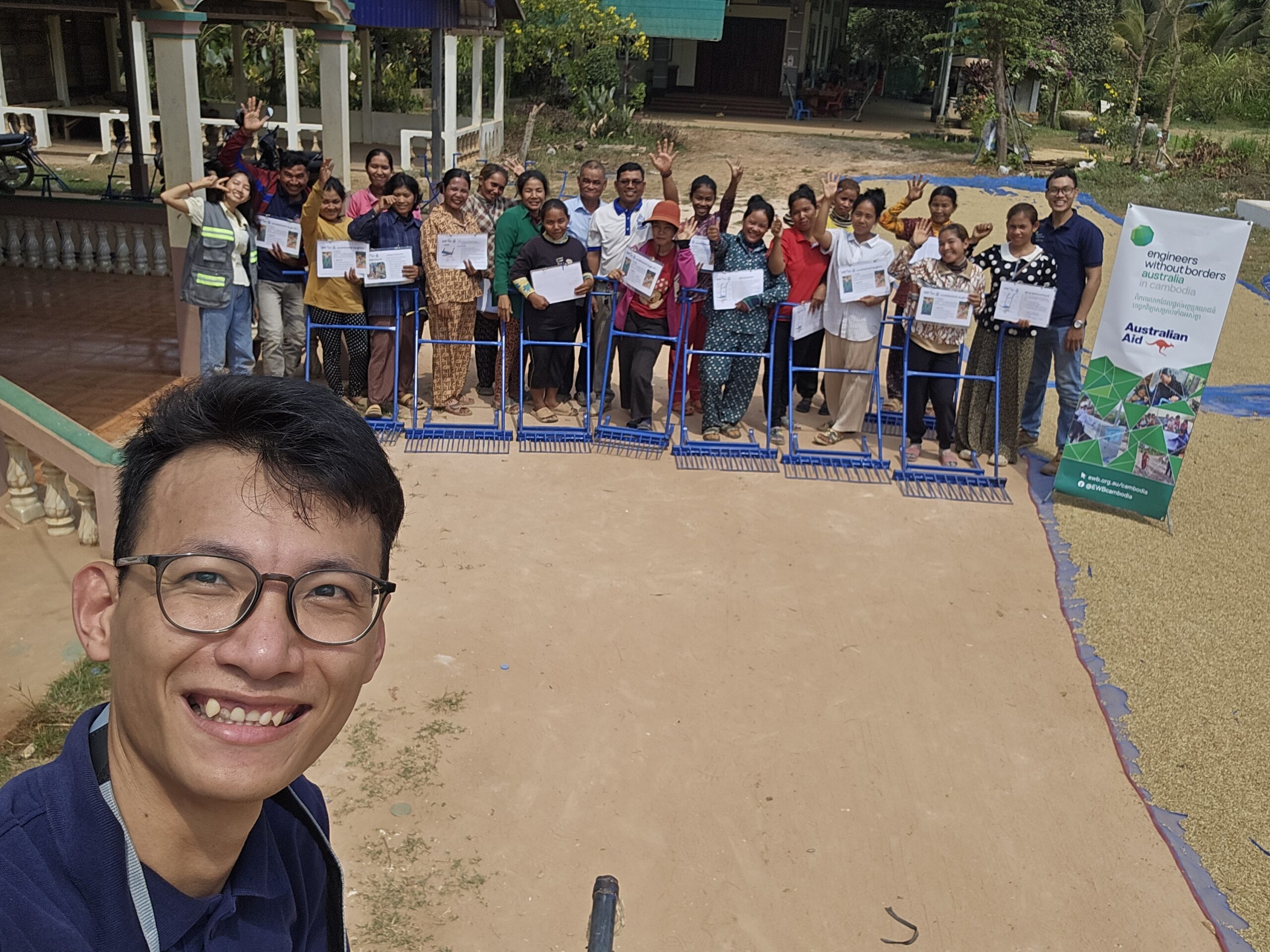
With the support of Banteay Srei, the EWB team plans to meet with local business owners and producers to discuss the future of the tool. The final version of the Handi-Plough tool costs only $57 AUD to manufacture and is already supporting Cambodian farmers and their livelihoods.
If you would like to fund the production of a Handi-Plough tool, please donate to EWB here.
This project received support from the Australian Government Department of Foreign Affairs and Trade through the Australian NGO Cooperation Program.


